For many of us, home is a place of comfort and safety; however, for millions of people throughout the country, the home is, unfortunately, a place of violence. In one year alone, 10 million people are physically abused by their intimate partner. This totals an average of 20 people per minute. In fact, 1 in 3 women and 1 in 4 men in the U.S. will experience some form of physical violence by their intimate partner in their lifetime.
The emergence of the COVID-19 pandemic only exacerbated our domestic violence crisis as all Americans were confined to their homes during the lock-down. Although domestic-violence hotlines dropped by more than 50% during the lock-down, this was not due to a decrease in domestic-violence. In fact, studies have come out that domestic violence increased significantly during the pandemic and victims of this violence had even fewer resources to turn to, such as the national domestic-violence hotline or website, because they were confined in their home with their abuser.
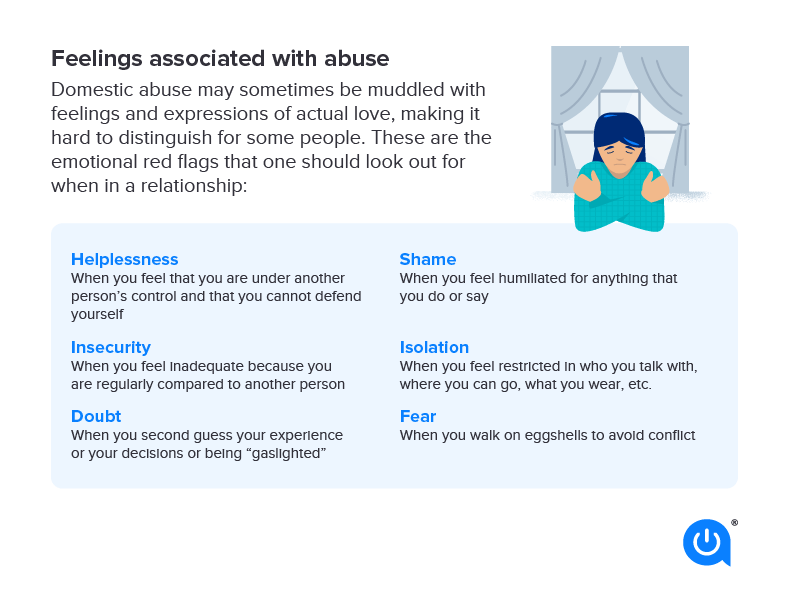
Domestic violence and technology
Another challenge victims of domestic violence experienced during the height of the pandemic was accessing clinic visits for Intimate Partner Violence (IPV) screenings. Due to lockdown orders, many places were only able to perform IPV screenings virtually. This left thousands of victims unable to receive their IPV screening either because they feared their abuser might hear or because they did not have access to a secure enough internet connection.
The inability to access telemedicine platforms due to a lack of internet access has become one of the most serious aspects of the digital divide – the divide in quality of life between those who have access to the internet and those who do not.
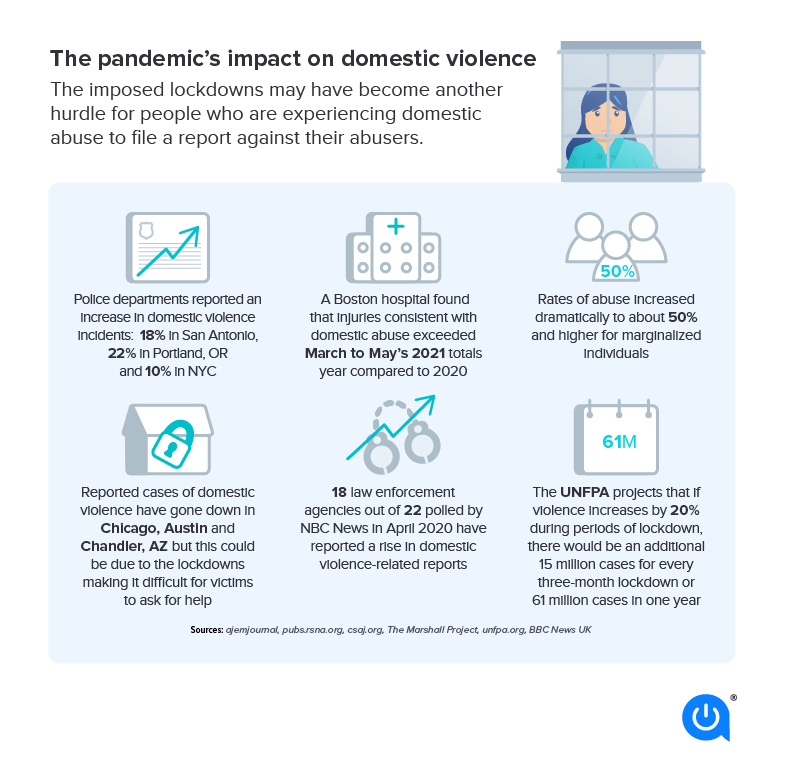
What is technology-facilitated abuse?
For those who do have access to the internet, technology can be one of the most destructive ways perpetrators of domestic violence abuse can maintain control over their victims. In fact, 71% of victims reported that their abuser surveilled their computer activity closely, making scheduling IPV screenings and accessing resources on the national domestic violence website incredibly challenging.
Some of the other most common forms of technology-facilitated abuse include harassing victims over text message, email or social media, impersonating someone on social media accounts, stalking people through tracking apps and threatening to upload explicit pictures or videos of the victim (known as revenge porn). These tactics are means of intimidation and control over someone.
Identify and understand the technology in your home
The advancement of technology has allowed perpetrators of domestic violence to monitor and harass their victims in a way they could never have done 50 years ago. Many don’t even know all the various technology that exists within their home and it certainly wouldn’t occur to most that someone might be hiding technology throughout the home to track their every move. But that’s the reality for millions of victims and survivors of domestic violence.
One of the most common ways abusers may monitor someone’s activities is through the victim’s computer. If you feel your computer or smartphone is being monitored, the best thing you can do is search about it in the library or go to a tech store to learn more. Although computers and smartphones are the most common ways abusers monitor their victims, anyone who has experienced domestic violence should also be wary of any home automation device or system. Any of these devices can be tampered with to monitor and harass you at home. The most common home automation devices and systems to look out for include:
- Wi-Fi and internet
- Thermostat
- Smart electrical outlets (with lights or other devices plugged into them)
- Entertainment systems (stereo, TV, etc.)
- Security cameras and motion detectors
- Smoke detectors
- Video doorbells
- Smart locks
- Children’s toys and trackers
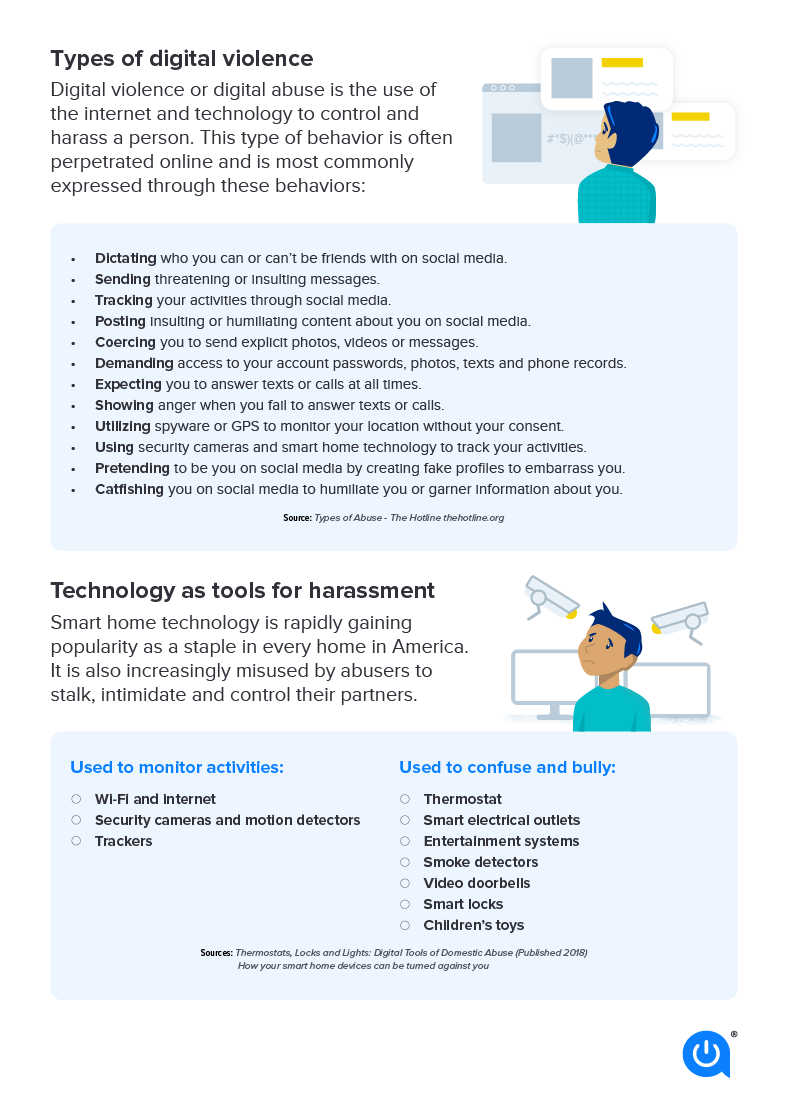
Preparing to leave your abuser: Safety and escape plan
If you have experienced domestic violence and you are seeking a way to leave the abuser, you likely want to create some form of an escape plan so that you can rehearse your plan and prepare for a wide variety of situations. In the heat of a crisis, it can be incredibly challenging to remain logical or level-headed, so the more you have planned and rehearsed ahead of time, the better. Here are some of the most important things to keep in mind when creating an escape plan.
- Set aside money – As you begin determining your exit plan, you will want to begin setting as much money aside as possible. Secretly opening a personal bank account can be terrifying, but the more ways you are able to create distance from your abuser and to establish independence, the more seamless your exit will ultimately be.
- Prepare an emergency bag – The day you plan to leave the house, you should already have backed an emergency bag. Pack the basics, including clothes, toiletries, phone chargers, wallet, keys, prescriptions, glasses, etc. and hide it in a secure location. If you think you are being monitored through technology in your home, you will need to be extra careful with this step.
- Come up with a code word – A code word is essential if your escape plan includes children. One of the best ways to prevent a situation from escalating is to create a code word with your children so that you can communicate with them when it’s time to leave without explicitly saying so.
- Secure important documents – When you leave your current living situation, there is a good chance you will never return. For that reason, it is essential you bring all your most important documents, including passports, Social Security cards and birth certificates. Additionally, if you are an immigrant of the U.S., make sure you pack your green card and any visa/immigration paperwork.
- If possible, get a new phone – A common way abusers monitor their victims is through phone tracking. Victims can be entirely unaware their phones are being tracked since a person doesn’t even necessarily need to ever touch someone’s phone to gain tracking access. Therefore, if you are planning to leave and want to ensure your abuser won’t be able to find you, getting rid of your phone is an essential step. However, leading up to your exit, make sure you use your original phone as if everything is normal. If you aren’t able to get a new phone, however, you can always save important emergency numbers under different names in your phone and use external places, such as libraries to plan your exit strategy.
- Plan your escape – Before the day of your exit, make sure you have all the logistics of your escape planned out. You should have gas in your car if you plan on driving, determine the times your abuser goes out and for how long, what it will take to leave as quickly as possible, etc. A great resource for helping to plan your escape plan is to contact shelters or domestic violence agencies. This is an especially good option if you are looking to file a restraining order or domestic violence protective order. They may also be able to help you find temporary housing options.
- Disable location services on all devices – Another good idea for the day of your exit is to disable all location services on your phone and even turn off Bluetooth or other wireless access on all technology devices. If you are unsure of all the steps you need to take with your technology, call a local domestic violence agency.
- Have local law enforcement assist – Another great option for helping ensure a safe exit is to call your local police department. They will help assist you with your exit or even help you return to collect the rest of your belongings from your home if needed.
Support services for victims of domestic violence
If you are a victim of domestic violence, it’s important to know that you’re not alone in getting yourself out. There are a wide variety of resources victims have access to that can help the transition out of a violent household as manageable as possible.
Financial independence
Research has found that up to 99% of victims of domestic violence also suffer some form of financial abuse. If you are worried about your financial situation after leaving your abuser, there are a range of resources and programs that can help you manage your finances, improve your credit score and figure out next steps for becoming financially independent.
To start, some of the most helpful programs to look into include:
- Paid Leave– If you are a victim of domestic violence, you have the right to take time off work. The Biden Administration proposed a $26 million fund for the National Domestic Violence Hotline, which will allow this organization to help even more victims of domestic violence navigate paid leave, housing vouchers and more.
- Food Assistance Programs- If you are worried about being able to feed you and your family after leaving your abuser, you can apply for the Supplemental Nutrition Assistance Program (SNAP). This program will provide qualifying families with food assistance. Other programs that can help victims of domestic violence receive food assistance include Temporary Assistance for Needy Families (TANF), Special Supplemental Nutrition Program for Women, Infants, and Children (WIC) and the Domestic Violence and Sexual Assault Coalition of Grass Valley.
- Federal and State Assistance Programs– The Office of Victim Services offers a victim compensation program that can help victims receive financial help. Compensation can reach as high as $25,000.
- Affordable Internet Options– The government offers an internet subsidy program known as Lifeline that can help low-income families receive discounts on broadband services. The government is also currently offering $50/mo. off low-income household internet bills through the Emergency Broadband Benefit for the remainder of the COVID-19 pandemic.
Immigration support for victims of domestic violence
If you are a victim of domestic violence in the U.S. and are not yet an American citizen, one of the best programs you can apply for is the U nonimmigrant status (U visa). The U visa was created by the Victims of Trafficking and Violence Protection Act of 2000 and exists to help noncitizen crime victims gain permission to live and work in the U.S. Another option is to apply for a green card under the federal Violence Against Women Act (VAWA). If you are a victim of domestic violence by a U.S. citizen or lawful permanent resident, you may qualify for a green card.
Secure housing
One of the hardest parts of leaving your domestic abuser is figuring out where to live, especially if you have kids. The New Hope for Women organization providers emergency shelter services for victims of domestic violence. The Domestic Shelters website is also a useful tool for finding nearby shelters for victims of domestic violence.
Legal assistance against digital abuse
If you are a victim of cyberstalking, harassment, surveillance or revenge porn, you have the right to take legal action. The Women’s Law organization is a great resource for helping women fight back against digital abuse. The Cyber Civil Rights Legal Project is another resource for helping victims of digital abuse; however, this organization offers free legal counsel specifically for victims of revenge porn. There are also blogs, such as the Colorado Lawyer Team, that help walk victims of digital abuse through how to gather evidence and create the best case possible for themselves.
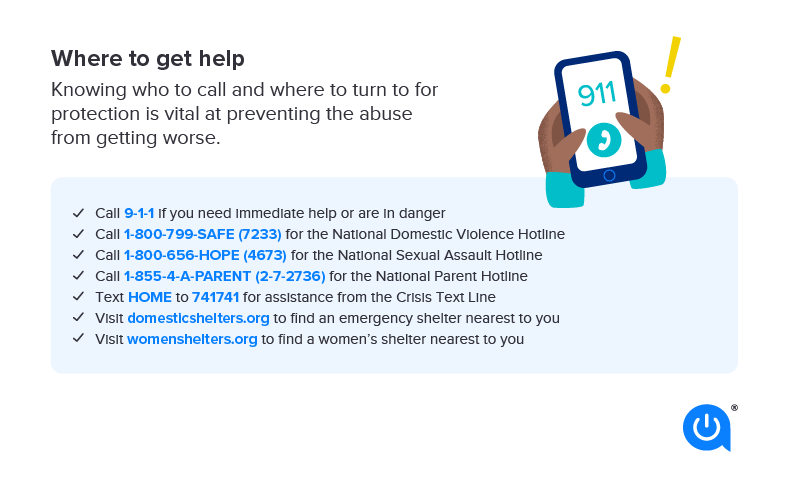
Protecting yourself after leaving
When you are in the process of leaving your abuser, you will want to make sure three key aspects of your life are as in order as possible: your physical safety, your finances and your job.
Home automation
When it comes to physical safety, an important step is keeping your home locked and secure. The best way to do this is by using home automation. Home automation devices can include security cameras, smart locks, video doorbells and motion detectors. The more secure you are able to make your home, the more at ease you will likely feel there. Of course, there is a digital divide when it comes to home automation due to the high-cost of this technology.
Finances
Often one of the more intimidating aspects of leaving your home and your domestic abuser is managing your finances. If you have a shared bank account with your abuser or if your abuser knows how to access your credit card activity, you will want to close both of these. Ensure that all of your information is private and that your abuser cannot access your information online or through any apps. This may require reinstalling financial apps or potentially even changing your Social Security number.
Notify your workplace
It is entirely a personal choice whether you share what you are going through with people from your workplace. However, the more they know, the more they may be able to work with you and help you as much as possible. It could also be beneficial to notify your workplace security that you may be at risk of cyberstalking or GPS stalking.
Safety tips when using technology
When you leave your abuser, it is imperative that you create as much distance between you both as possible. Perpetrators of domestic violence often use technology and the internet in order to keep as close an eye on you as possible. For that reason, you will want to take a few safety precautions with all of your various online activities.
- Internet safety – You will want to remove any personal information from the internet that you do not want your abuser to have access to. You can likely remove most of this information yourself; however, sometimes you have to ask the person in charge of the site to take something down for you. You may also want to clear your browser history frequently and even change the settings on your computer to prevent cookies from saving onto your computer. This step will help prevent your abuser from being able to see which websites you have visited.
- Email safety – A good way to prevent your abuser from viewing your internet activity is to change your email passwords, make sure the password doesn’t save on your computer, delete email exchanges and log out of your email account after each use.
- Cellphone safety – Just like with email, you will want to change your passwords to get into your phone. You will also want to check the settings in your phone to ensure you have not enabled location sharing.
- Social media safety – You will also want to change your passwords for all of your social media and ensure that your privacy settings are on the maximum setting. Additionally, take down any information on your social media accounts that you would not want your abuser to have access to. You may also want to consider deleting your social media accounts entirely.
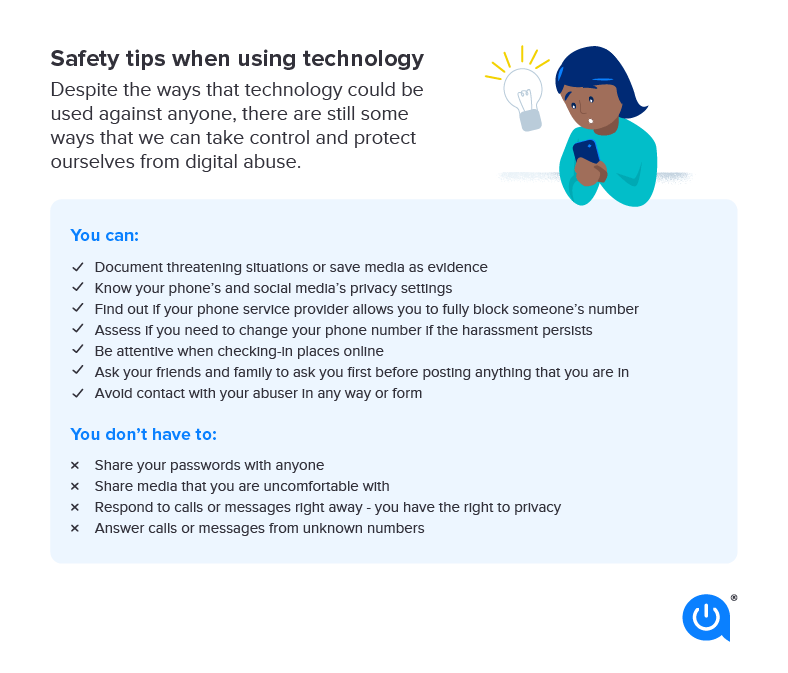

Written by:
Ari HowardAssociate Writer, Broadband & Wireless Content
Ari Howard is a staff writer Healthline and spent two years as a writer on the Allconnect team. She specialized in broadband news and studies, particularly relating to internet access, digital safety, broadband-…
Read more
Edited by:
Robin LaytonEditor, Broadband Content
-
Featured
![Guide to low-income internet options and affordable internet plans]() Guide to low-income internet options and affordable internet plans Robin Layton — 4 min read
Guide to low-income internet options and affordable internet plans Robin Layton — 4 min read -
Featured
![5 of the best parental control apps to keep your children safe online]() 5 of the best parental control apps to keep your children safe online Robin Layton — 2 min read
5 of the best parental control apps to keep your children safe online Robin Layton — 2 min read -
Featured
![Does incognito mode on your computer protect your privacy?]() Does incognito mode on your computer protect your privacy? Ari Howard — 3 min read
Does incognito mode on your computer protect your privacy? Ari Howard — 3 min read
Latest
-
Thursday, July 25, 2024
Worried about losing your signal? This is how to keep your satellite dish cleanDavid Anders — 6 min read
-
Tuesday, July 23, 2024
The best free TV and movie streaming services 2024Camryn Smith — 5 min read
-
Tuesday, July 23, 2024
Everything you need to know about internet speedsRobin Layton — 8 min read






